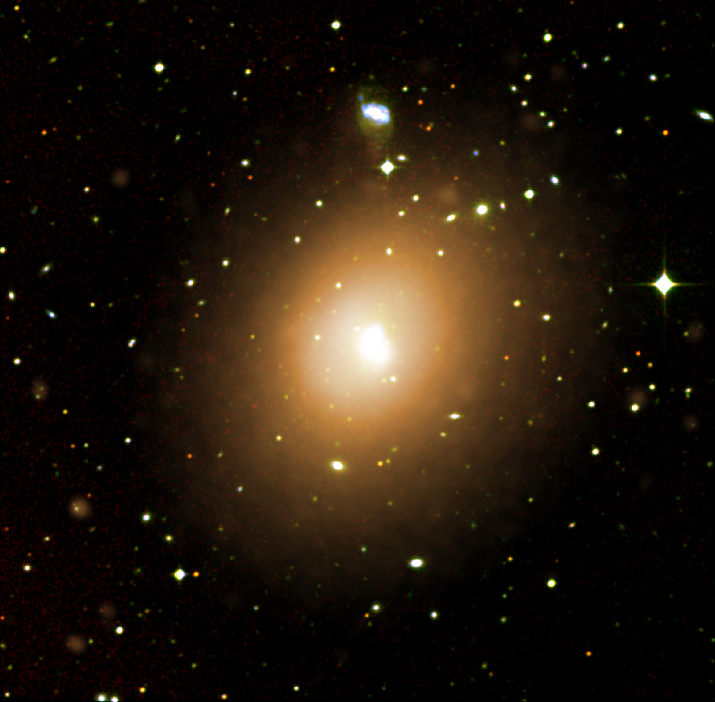Where do the chemical elements that we are made up of come from? SRON researcher Francois Mernier investigated this during his PhD research by measuring the composition of huge hot gas clouds in space more accurately than ever before. On Wednesday 31 May, Mernier will defend his PhD thesis on the subject at Leiden University.

Chemical elements such as oxygen, silicon and iron are abundant on Earth. All life is composed of these elements, even. But where do they come from? Astronomers have known for some time that exploding stars produce these elements. We are therefore literally made up of stardust. But when were these elements made? And how exactly does that happen in exploding stars?
Using the ESA satellite XMM-Newton, Francois Mernier investigated the huge hot gas clouds around clusters of galaxies. Clusters are groups of hundreds of galaxies, which each consist of hundreds of billions of stars. These galaxies hang in a huge cloud of gas with a temperature of millions of degrees. Over the course of time, this hot gas has been enriched with elements that were slung into the cloud by exploding stars. Using XMM-Newton, Mernier measured the quantities and distribution of these elements more accurately than ever before and compared the measurements with models for different types of exploding stars. This enabled Mernier to obtain a clearer picture of the evolution of chemical elements in the universe.
On Wednesday 31 May, Mernier will defend his PhD thesis entitled ‘From Supernovae to galaxy clusters’ at Leiden University. He did most of his research at SRON Netherlands Institute for Space Research in Utrecht, where the RGS instrument on board XMM-Newton was built. His research has been published in various articles in the Journal Astronomy & Astrophysics.
Chemische samenstelling grootste objecten in het heelal ontrafeld
Waar komen de chemische elementen vandaan waar we uit bestaan? SRON-onderzoeker Francois Mernier zocht het tijdens zijn promotieonderzoek uit door nauwkeuriger dan ooit de samenstelling van verschillende enorme hete gaswolken in het heelal te meten. Woensdag 31 mei promoveert Mernier op dit onderwerp aan de Universiteit Leiden.
Chemische elementen, zoals zuurstof, silicium en ijzer vinden we volop op Aarde. Al het leven is er zelfs uit opgebouwd. Maar waar komt het vandaan? Sterrenkundigen weten al een tijd dat ontploffende sterren deze elementen maken. We bestaan dus letterlijk uit sterrenstof. Maar wanneer zijn die elementen gemaakt? En hoe doen die ontploffende sterren dat precies?
Francois Mernier zocht het uit door met ESA satelliet XMM-Newton naar enorme hete gaswolken rond clusters van melkwegstelsels te kijken. Clusters zijn groepen van honderden melkwegstelsels die elk bestaan uit honderden miljarden sterren. Die stelsels hangen in een enorme wolk gas met een temperatuur van miljoenen graden. Dit hete gas is in de loop van de tijd verrijkt met elementen die door ontploffende sterren de wolk in zijn geslingerd. Mernier mat de hoeveelheden en de verspreiding van die elementen met XMM-Newton nauwkeuriger dan ooit en vergeleek de metingen met modellen van verschillende types ontploffende sterren. Zo kon Mernier een duidelijker beeld krijgen van de ontstaansgeschiedenis van chemische elementen in het heelal.
Woensdag 31 mei verdedigt Mernier zijn proefschrift “From Supernovae to galaxy clusters” aan de Universiteit Leiden. Hij deed zijn onderzoek voornamelijk bij SRON Netherlands Institute for Space Research in Utrecht, waar ook het RGS instrument aan boord van XMM-Newton is gebouwd. Zijn onderzoek is verder in diverse artikelen in het vaktijdschrift Astronomy & Astrophysics gepubliceerd.


